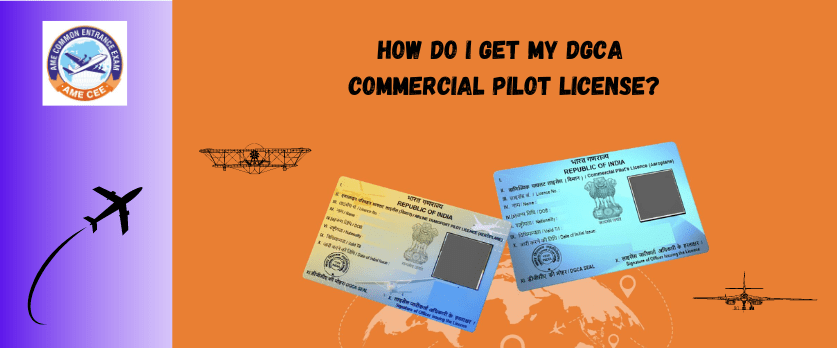Obtaining a Commercial Pilot License (CPL) from the Directorate General of Civil Aviation (DGCA) in India involves a series of steps. Keep in mind that the following information is based on the general process as of my last update in January 2022, and specific requirements may have changed. It’s crucial to consult the latest DGCA regulations and guidelines for the most accurate and up-to-date information. Here is a general overview of the steps involved:
Educational Qualification
Ensure that you meet the educational requirements set by the DGCA. Typically, candidates are required to have completed their 10+2 education with Physics and Mathematics as compulsory subjects.
Medical Examination
Undergo a Class 1 Medical Examination conducted by a DGCA-approved aviation medical examiner. This medical certificate is crucial to ensure that you are physically and mentally fit to fly.
Private Pilot License (PPL)
Start your flying training to obtain a Private Pilot License (PPL). This phase includes both ground school (theoretical training) and flight training. The PPL is a prerequisite for the CPL.
Accumulate Flight Hours
Accumulate the required flight hours. The DGCA has specific requirements for the total flight hours, including solo and dual flight hours, cross-country flights, and night flying.
Theory Examinations
Prepare for and pass the DGCA theory examinations covering subjects such as air regulations, navigation, meteorology, and aviation procedures. These exams are typically conducted by the DGCA or authorized examination bodies.
Instrument Rating (IR)
Consider obtaining additional ratings, such as an Instrument Rating (IR), if required. An IR allows you to fly in conditions with reduced visibility using only the aircraft’s instruments.
Commercial Pilot License (CPL) Ground Classes
Attend CPL ground classes to gain theoretical knowledge specific to commercial flying.
CPL Flight Training
Complete the flight training required for the CPL, which includes additional flight hours and specific maneuvers.
Skill Test
Successfully complete the CPL skill test, which involves a practical flying examination to demonstrate your flying skills.
Apply for CPL
Submit the necessary application forms and documentation to the DGCA for the issuance of your Commercial Pilot License.
Airline Transport Pilot License (ATPL)
After accumulating sufficient total flight hours and meeting other criteria, you may consider upgrading to an Airline Transport Pilot License (ATPL), which is required for serving as the commander (captain) on an airline.
Always verify the latest DGCA regulations and guidelines, as they may be subject to updates and changes. Additionally, consider seeking guidance from approved flight training organizations in India for specific details on the training process and requirements.
To pursue a career as a commercial pilot in India, it is imperative to obtain a Commercial Pilot License (CPL) issued by the Directorate General of Civil Aviation (DGCA). Meeting specific criteria set by the DGCA is crucial for CPL eligibility. Here are the essential requirements:
100 Hours Pilot in Command (PIC)
Complete a minimum of 100 hours of flight time as the pilot in command.
250 Nautical Miles Cross Country Check
Successfully undertake a cross-country flight covering a distance of at least 250 nautical miles.
40 Hours Instrument Flight (20 on Simulator)
Acquire 40 hours of instrument flight time, with a provision for up to 20 hours on a flight simulator.
50 Hours Solo Cross Country
Demonstrate proficiency by completing 50 hours of solo cross-country flight time.
120 Nautical Miles Check
Successfully complete a check flight covering a distance of at least 120 nautical miles.
15 Hours Multi-Engine
Gain expertise through 15 hours of flight time on multi-engine aircraft.
300 Nautical Miles Solo Cross Country
Accomplish a solo cross-country flight, covering a distance of at least 300 nautical miles.
10 Takeoffs and Landings by Night
Demonstrate proficiency with a minimum of 10 takeoffs and landings during night flying conditions.
These requirements reflect the comprehensive training and experience needed to obtain a CPL from the DGCA. Aspiring commercial pilots must diligently fulfill these criteria to ensure they meet the standards set by the aviation regulatory authority in India. Always refer to the latest DGCA guidelines for the most up-to-date information on CPL requirements.
To become an commercial pilot you may could join commercial pilot license through AME COMMON ENTRANCE EXAM (AME CEE) this examination you may join Commercial Pilot License approved by DGCA.


